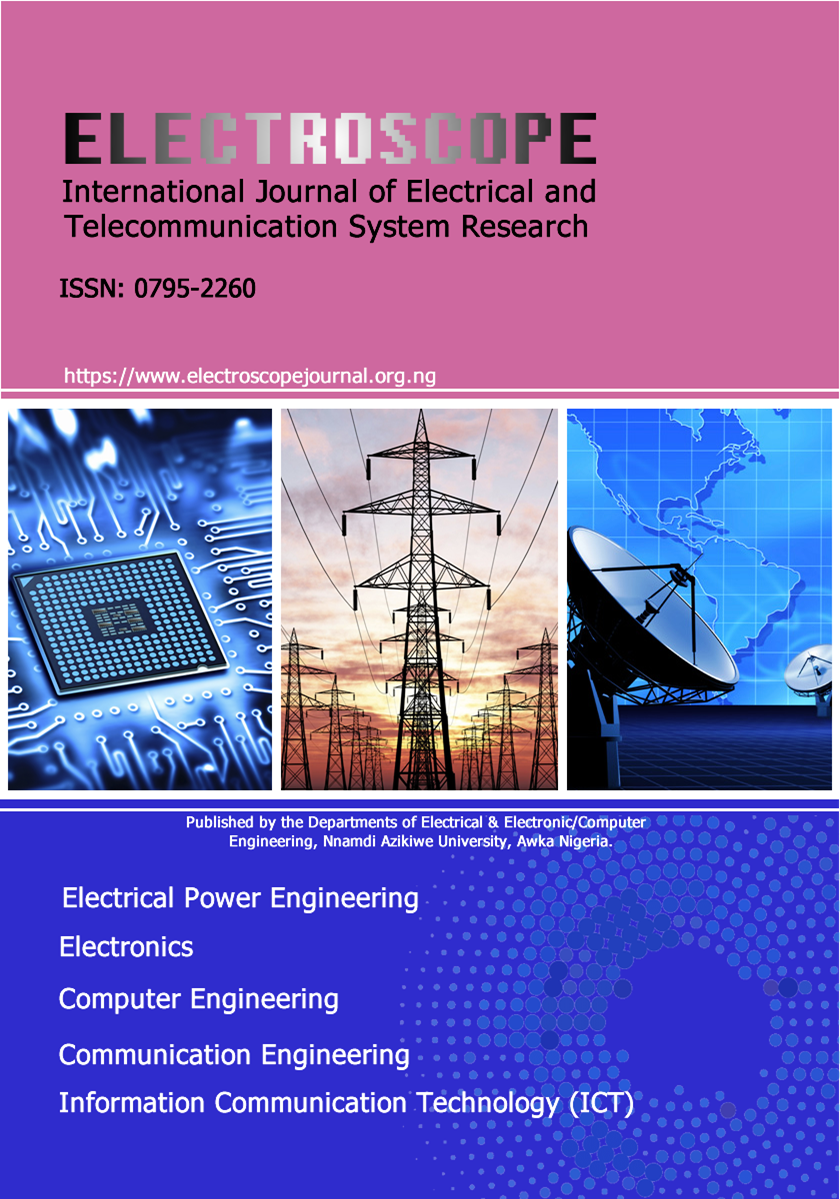FOURTH GENERATION LONG TERM EVOLUTION (4G LTE) KEY PERFORMANCE INDICATOR ANALYSIS AND PERFORMANCE EVALUATION OF SPECTRANET
Keywords:
4G LTE, KPI, MTBF, MTTR, PRBAbstract
Long Term Evolution (LTE) is necessitated by the unceasing increase in demand for high speed connection on wireless mobile networks, notwithstanding the mammoth amount of investment into communication systems by Nigerian government through Nigeria Telecommunication (NITEL), Mobile Telecommunication (MTEL), there is still need for improved Quality of Service (QOS) to enable efficient day to day businesses in the country. Proper cellular planning, adequate capacity provision and ability to sustain quality of service at all time, through means of generating and analysing key performance index of deployed radio cells at different locations, in order to detect, resolve and restore poor performing cells in shortest possible time, hence reducing downtime and enhancing Quality of Service (QoS). This paper analysed and evaluated the Key Performance Indicators (KPI) and empirical data of SPECTRANET LTD, Abuja, acquired through Huawei Imanager 2000 software tool, drive test and open Signal software. Analysing the obtained data, presented an accurate performance of the network and the performance of each cell sector. It was observed that less than or equal to 20% of online subscribers consumes about 80% of the provisioned radio resources per cell. From results obtained, it was discovered that cells with very poor throughput performance (≤0.8Mbps) as well as low number users (≤15) have island coverage, a footprint out of designed area. However, 70% the cells with average users >40 tends to have low throughput performance below < 1.5 Mbps, as well as poor Reference Signal Received Power (RSRP) of -95dBm, and Signal to Noise Ratio (SNR) of -10dB due to contention ratio amongst users. However, in contrast to conventional system of breakdown approach, this paper presented an evaluation technique based on preventive approach that reduces Mean Time to Repair (MTTR) and improves Mean Time before Failure (MTBF) by 50%, which are core maintenance metrics that drives network efficiency, reliability and availability.


